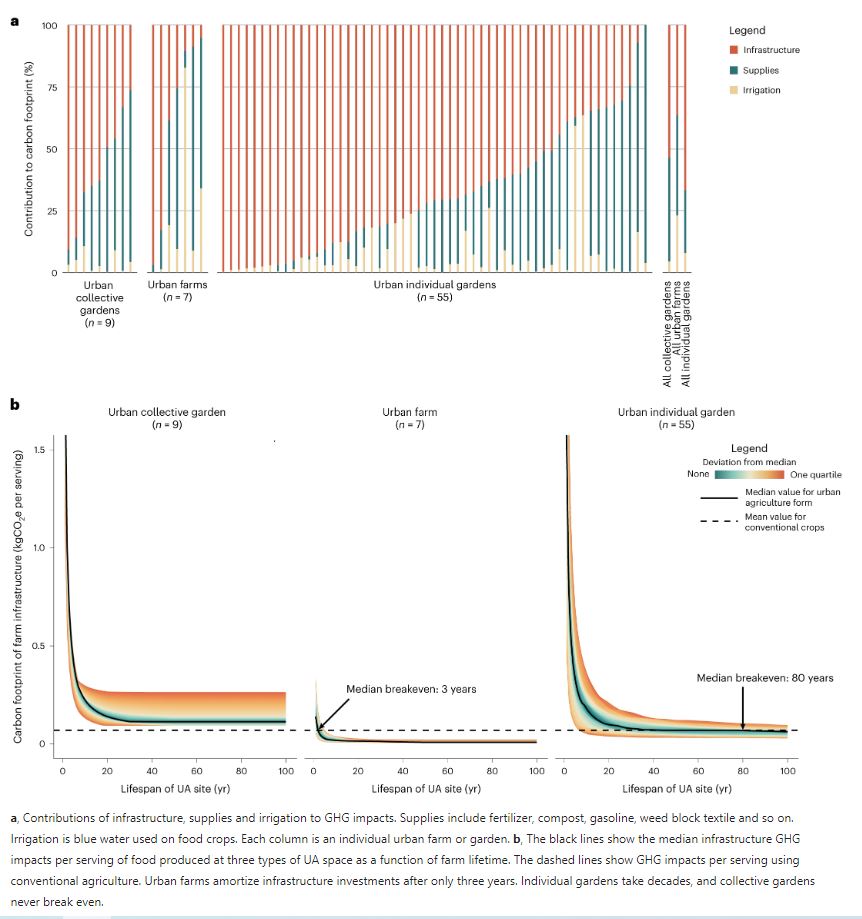Comparing the carbon footprints of urban and conventional agriculture
January 22, 2024 | Nature Cities |
Introduction: Urban agriculture (UA) is seen as a key solution for creating sustainable urban food systems. In collaboration with European researchers, a US research team based in University of Michigan compared the environmental impact of UA to conventional agriculture across 73 sites in Europe and the United States.
Key findings: Results showed that UA produces six times more carbon emissions per serving compared to conventional farming. However, some UA crops and sites outperform conventional agriculture, suggesting ways to reduce climate impact. Recommendations include cultivating crops typically grown in greenhouses or air-freighted, prolonging UA infrastructure lifespan, and utilizing urban waste for inputs. Despite UA's higher carbon intensity, it offers social benefits like improved mental health and community building. Future research should explore strategies to mitigate UA's environmental impact while maximizing its social and nutritional benefits.

Figure | Infrastructure and carbon footprints at urban agriculture sites.
Viewed Articles
January 22, 2024 | Nature Cities |Introduction: Urban agriculture (UA) is seen as a key solution for creating sustainable urban food systems. In collaboration with European researchers, a US research
Read More
January, 2023 | Heliyon | Source | Introduction: Azolla, an aquatic fern with nitrogen-fixing capabilities through its symbiotic association with Aenabana azollae, has the potential to serve as an ec
May 1, 2024 | Journal of Cleaner Production | Source | Introduction: Region-specific strategies are critical for China to balance crop production and environmental sustainability. This study, led by
April 29, 2021 | Environmental Research Letters | Source | Introduction: Researchers from the University of Freiburg and University of Kassel (Germany), together with the Vienna University of Economi
April 14, 2022 | Earth System Science Data | Source | Introduction: Traditional assessments have underestimated global GHG emissions from agrifood systems by focusing mainly on farm-level production a
April 27, 2021 | Environmental Science and Pollution Research | Source | Introduction: This review, led by scientists from the Department of Environmental Sciences at Central University of Jharkhand





